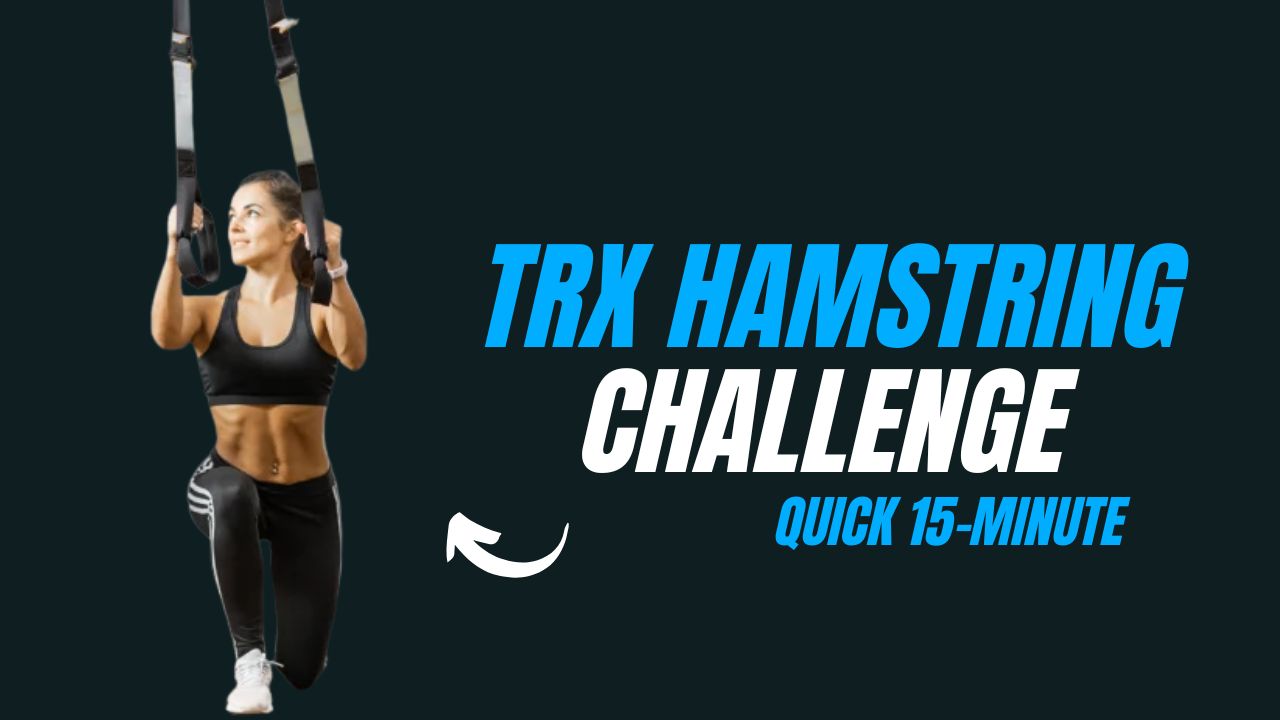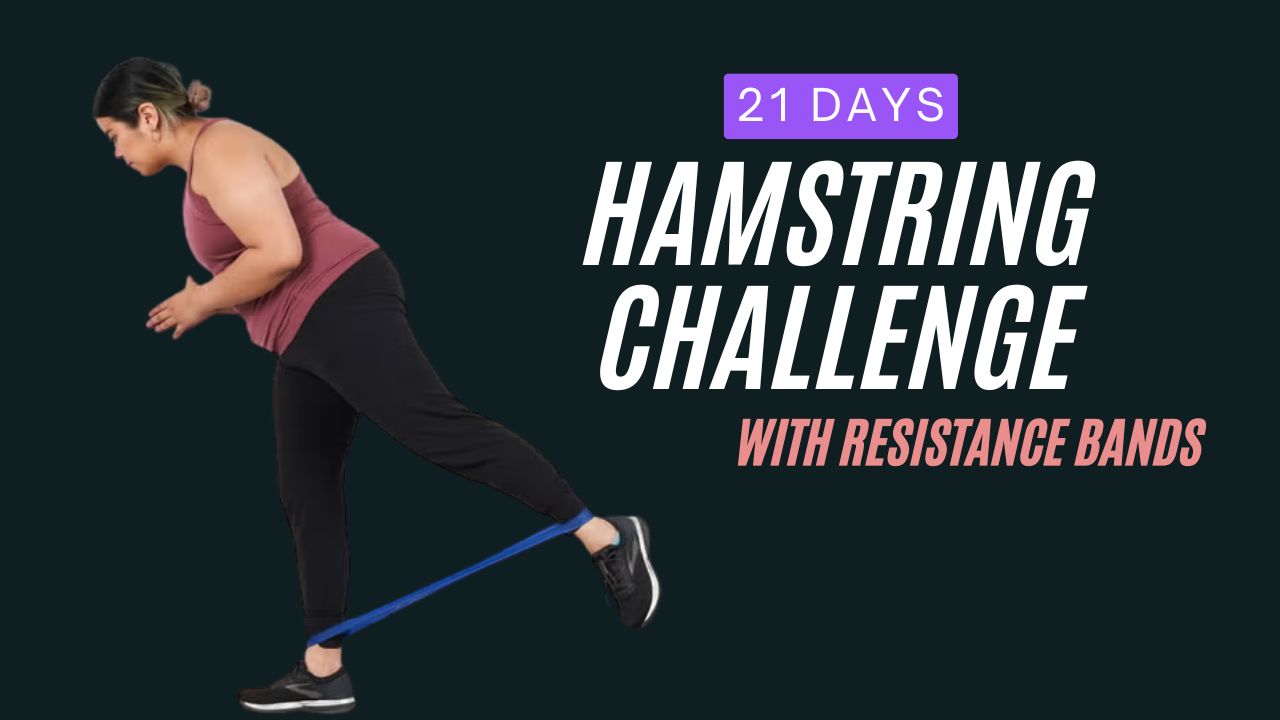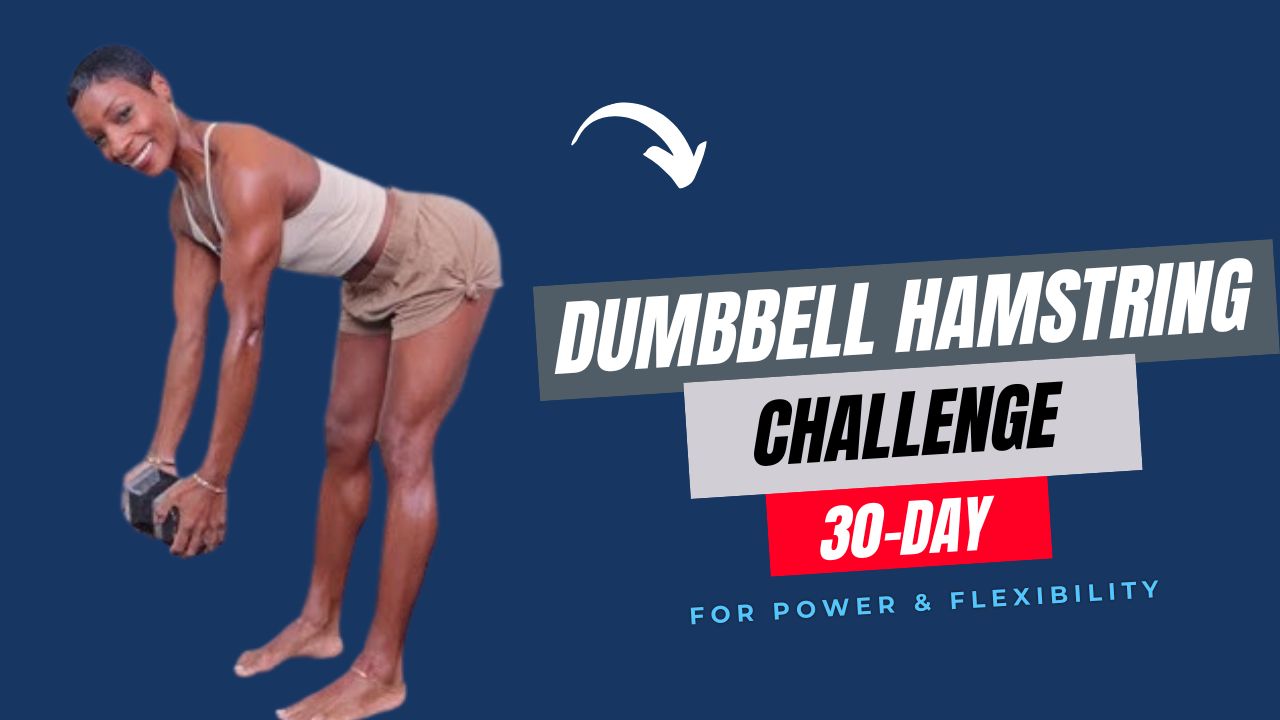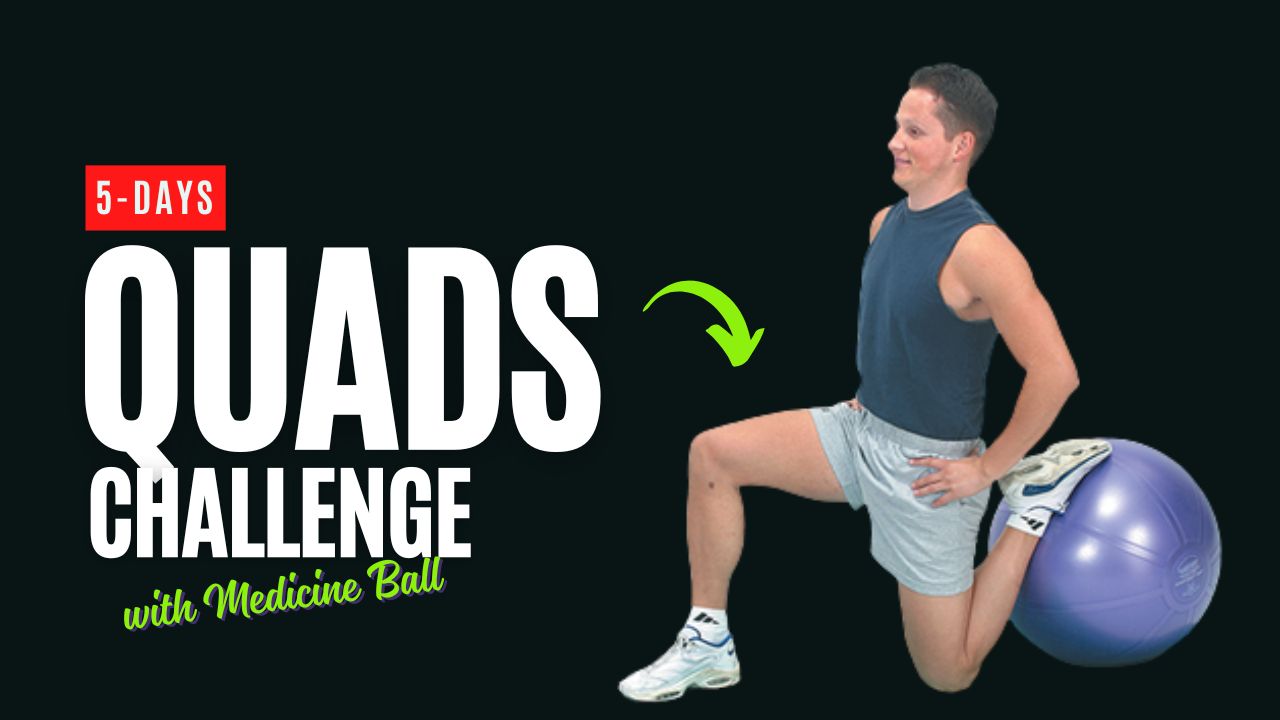Most runners believe that logging more miles is the only way to become faster and prevent injuries. But here’s the truth: your hamstrings could be the missing link in unlocking better performance.
These powerful muscles at the back of your thighs are essential for stride power, sprinting speed, and injury prevention. Weak or tight hamstrings can lead to common running issues like hamstring strains, IT band syndrome, or even knee pain.
Do you know? Studies show that hamstring injuries account for up to 37% of all running-related muscle injuries, making them one of the most vulnerable areas for endurance athletes. Strengthening them with short but targeted bodyweight exercises can make a world of difference in your running efficiency.
That’s why this 10-minute bodyweight hamstring challenge is designed specifically for runners. No gym equipment is needed, just your own body weight and determination.
Let’s explore why these exercises matter, how to perform them correctly, and how to structure them into a quick yet powerful workout.
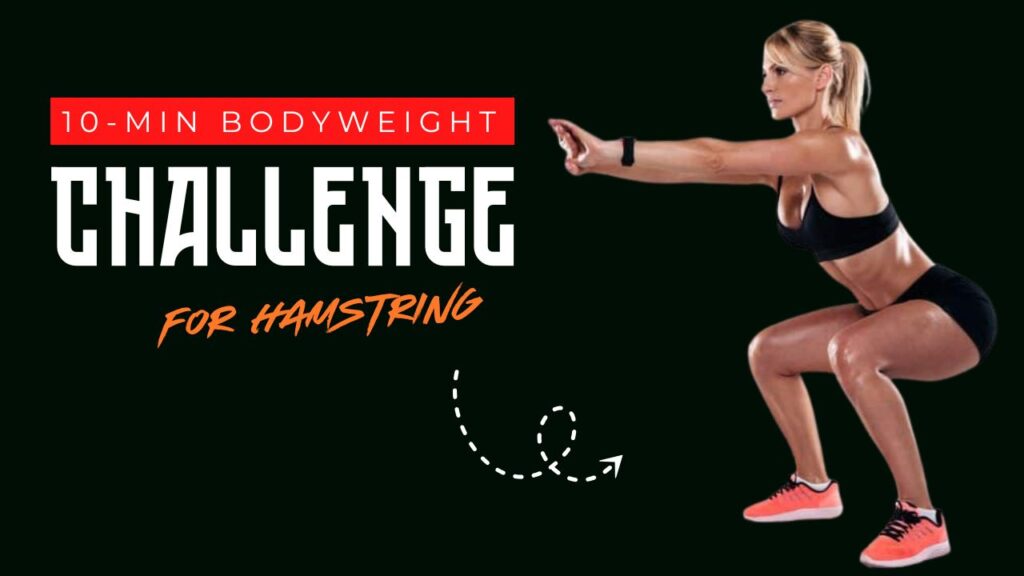
Table of Contents
Why Hamstrings Are Crucial for Runners
Before diving into the exercises, let’s understand their role:
- Stride Efficiency: Your hamstrings help extend the hip and bend the knee, powering each stride. Strong hamstrings mean smoother, more efficient running.
- Injury Prevention: Weak hamstrings create imbalances, often forcing the quads and hips to compensate, which increases risk of strains.
- Speed Boost: Fast-twitch fibers in the hamstrings are vital for sprinting. Strengthening them can improve acceleration and top speed.
- Better Endurance: Strong hamstrings delay muscle fatigue, allowing you to maintain pace for longer.
Myth Busted: Many runners think stretching alone is enough to prevent hamstring injuries. While flexibility helps, strength is the real key to resilient hamstrings.
What Can Happen After 30 Days of This Hamstring Challenge
| Benefit / Result | Explanation |
|---|---|
| Stronger Hamstrings | Improved muscle strength allows for more powerful strides and better running performance. |
| Reduced Injury Risk | Strengthened hamstrings and posterior chain help prevent strains, pulls, and knee or lower back pain. |
| Better Running Form | Enhanced muscle balance promotes smoother, more efficient running mechanics. |
| Increased Flexibility | Dynamic stretches and movement patterns improve hamstring flexibility and reduce tightness. |
| Improved Endurance | Stronger hamstrings fatigue less quickly, allowing longer, more consistent runs. |
| Enhanced Core Stability | Many exercises engage the core, improving overall stability and balance. |
| Glute Activation | Glutes work alongside hamstrings, boosting running power and hip stability. |
| Faster Recovery | Stronger muscles and improved circulation aid in quicker recovery between runs. |
| Balanced Muscle Development | Single-leg exercises correct side-to-side imbalances, improving overall symmetry. |
| Boosted Confidence | Seeing tangible improvements in strength and running performance increases motivation to continue. |
Do’s & Don’ts for Hamstring Challenge
| Do’s | Don’ts |
|---|---|
| Warm up for 3–5 minutes before starting the routine. | Skip the warm-up and start the exercises cold. |
| Maintain proper form throughout each exercise. | Rely on momentum instead of controlled movements. |
| Engage your core and glutes to support hamstring activation. | Let your lower back sag during bridges or good mornings. |
| Perform exercises at a steady pace, focusing on quality. | Rush through the circuit to finish faster. |
| Rest for 20 seconds between exercises as suggested. | Hold your breath or skip rest periods completely. |
| Progress gradually by adding time, rounds, or repetitions. | Push too hard too soon, risking strain or injury. |
| Listen to your body and adjust intensity if needed. | Ignore sharp pain or discomfort; this can lead to injury. |
| Incorporate this challenge 3–4 times per week for best results. | Overtrain without recovery days. |
| Use the single-leg variations to correct muscle imbalances. | Only perform bilateral exercises, neglecting one side. |
| Cool down with light stretching or foam rolling after the routine. | Finish abruptly and skip post-workout recovery. |
10-Minute Bodyweight Hamstring Challenge Exercises
Below are the exercises carefully selected to target your hamstrings, glutes, and supporting muscles. Each description includes why it works and a step-by-step “how-to” so you can follow along safely.
1. Glute Bridge
Why It Works:
The glute bridge activates your posterior chain—hamstrings, glutes, and lower back. It’s a foundational move for runners who spend hours with tight hip flexors.
How to Do It:
- Lie flat on your back with knees bent and feet hip-width apart on the floor.
- Place arms at your sides, palms facing down.
- Press your heels into the ground and lift your hips until your body forms a straight line from shoulders to knees.
- Squeeze your glutes and hamstrings at the top for 2 seconds.
- Lower slowly and repeat.
2. Single-Leg Glute Bridge
Why It Works:
This variation adds unilateral training, which corrects imbalances between your right and left hamstrings—a common issue for runners.
How to Do It:
- Start in the glute bridge position.
- Extend one leg straight out while keeping the other foot on the ground.
- Push through your grounded heel to lift hips upward.
- Hold briefly at the top, then lower with control.
- Switch legs after reps.
3. Hamstring Walkouts
Why It Works:
A dynamic move that lengthens and strengthens the hamstrings while engaging the core. It mimics the forward motion of running.
How to Do It:
- Begin in a glute bridge position with hips raised.
- Slowly “walk” your feet forward in small steps until your legs are nearly extended.
- Keep hips lifted and avoid dropping your lower back.
- Walk your feet back in and repeat.
4. Reverse Plank Leg Lift
Why It Works:
This exercise strengthens hamstrings, glutes, and also challenges your core stability. It’s excellent for improving balance in stride mechanics.
How to Do It:
- Sit on the floor with legs extended and hands placed behind you, fingers pointing forward.
- Press into your hands and heels to lift hips, forming a straight line from shoulders to heels.
- Lift one leg toward the ceiling while keeping hips elevated.
- Lower slowly and alternate legs.
5. Hip Thrust (Bodyweight)
Why It Works:
Similar to glute bridges but with a greater range of motion, hip thrusts activate hamstrings deeply and build explosive strength.
How to Do It:
- Sit on the floor with your upper back resting against a sturdy surface (like a sofa or bench).
- Bend your knees and keep feet flat on the ground.
- Drive through your heels to lift hips until thighs are parallel to the ground.
- Hold, squeeze hamstrings, then lower slowly.
6. Nordic Curl (Assisted)
Why It Works:
One of the best hamstring strengtheners, Nordic curls are usually advanced but can be adapted using bodyweight and assistance.
How to Do It:
- Kneel on a soft surface with feet anchored (under a sofa or by a partner).
- Keep your body straight from head to knees.
- Slowly lower your torso forward while engaging hamstrings.
- Catch yourself with your hands and push lightly back up.
7. Hamstring Scoop Stretch with Activation
Why It Works:
This combines mobility and activation. The hamstring scoop not only stretches but also engages the hamstring to prep for dynamic running.
How to Do It:
- Stand tall and extend one foot forward, heel on the ground.
- Hinge at hips and “scoop” your arms downward as you stretch the hamstring.
- Return upright and gently contract the hamstring before switching legs.
8. Good Morning (Bodyweight)
Why It Works:
A classic move for posterior chain activation, the bodyweight good morning trains the hamstrings through hip hinging mechanics, similar to running motion.
How to Do It:
- Stand with feet shoulder-width apart.
- Place hands behind your head or crossed at chest.
- Keep your back straight and hinge at the hips, pushing them backward.
- Lower until torso is nearly parallel to the floor, then return upright.
9. Isometric Hamstring Hold
Why It Works:
Holding a contraction builds endurance strength, crucial for runners who need hamstrings that don’t tire easily.
How to Do It:
- Lie on your back with heels on the floor and knees bent at 90 degrees.
- Lift hips into a bridge position.
- Dig heels into the ground and hold for 20–30 seconds.
- Keep hamstrings tight throughout.
10. Runner’s Reach
Why It Works:
This movement stretches and strengthens simultaneously, mimicking running posture while challenging balance.
How to Do It:
- Stand tall on your right leg with left leg lifted slightly behind.
- Reach forward with both hands while hinging at hips.
- Maintain balance as you feel hamstring stretch in your standing leg.
- Return to start and switch sides.
10-Minute Hamstring Challenge Routine
Now that you know the exercises, here’s how to structure them into a 10-minute challenge. Perform the movements back-to-back with minimal rest.
Workout Format:
- Perform each exercise for 40 seconds
- Rest for 20 seconds
- Complete all 10 exercises = 10 minutes
Workout Challenge Table
| Exercise | Duration (seconds) | Rest (seconds) |
|---|---|---|
| Glute Bridge | 40 | 20 |
| Single-Leg Glute Bridge (R) | 40 | 20 |
| Single-Leg Glute Bridge (L) | 40 | 20 |
| Hamstring Walkouts | 40 | 20 |
| Reverse Plank Leg Lift | 40 | 20 |
| Hip Thrust | 40 | 20 |
| Nordic Curl (Assisted) | 40 | 20 |
| Good Morning (Bodyweight) | 40 | 20 |
| Isometric Hamstring Hold | 40 | 20 |
| Runner’s Reach (Alternating) | 40 | 20 |
Conclusion: Stronger Hamstrings, Stronger Runs
Hamstring strength isn’t just about building muscle—it’s about running smarter, safer, and faster.
These often-overlooked muscles are your hidden powerhouse, working quietly behind the scenes to propel every stride forward.
By dedicating just 10 minutes a day to this hamstring-focused challenge, you’ll notice improvements not only in strength but also in stride efficiency, balance, and injury resilience.
Challenge Continuation Idea
Once you’ve mastered this 10-minute hamstring challenge, don’t stop there. Progress by:
- Adding Rounds: Complete the circuit twice (20 minutes) to increase endurance.
- Time Progression: Extend each exercise to 50–60 seconds while keeping rest the same.
- Weekly Mix: Pair this routine with a core or glute workout on alternate days for balanced lower-body strength.
- Pre-Run Activation: Use 3–4 exercises from this routine as a dynamic warm-up before long runs or speed sessions.
Remember, consistency is key. Treat this challenge as part of your running journey rather than a one-time experiment, and your hamstrings will reward you with speed, stability, and fewer injuries in the long run.
Frequently Asked Questions (FAQs)
Can I do this hamstring challenge before my run?
Yes! Several exercises, like glute bridges, hamstring walkouts, and runner’s reach, can serve as a dynamic warm-up. Perform 1–2 rounds with lighter intensity to activate your muscles without causing fatigue.
Do I need any equipment for this routine?
No equipment is required. All exercises use bodyweight, making it easy to perform anywhere—at home, in a park, or even before heading out for a run.
How often should I do this challenge?
For best results, perform this routine 3–4 times per week. If you run regularly, you can incorporate 2–3 rounds on non-consecutive days to allow recovery.
How do I know if I’m performing the exercises correctly?
Focus on controlled movement and proper form rather than speed. Keep your core engaged, hips lifted for bridges, and avoid overextending during good mornings. If unsure, practice in front of a mirror.
Can beginners do this challenge?
Absolutely. Beginners can reduce duration per exercise to 20–30 seconds and rest longer if needed. Gradually increase time and rounds as strength improves.
What if I feel tightness or discomfort in my hamstrings?
Mild muscle tension is normal, but sharp pain is a warning sign. Pause and stretch gently. Incorporating foam rolling or light dynamic stretches before the challenge can help prevent tightness.
Will this routine help prevent running injuries?
Yes. Strengthening hamstrings improves balance, stride mechanics, and posterior chain stability, reducing the likelihood of hamstring strains, knee pain, and lower back issues.
Can I combine this challenge with other workouts?
Yes. Pair it with core, glute, or quad exercises on alternate days for a full lower-body strength program. You can also use 3–4 exercises as part of your pre-run activation routine.
How soon will I notice results?
With consistent effort, many runners notice improved hamstring strength, stability, and reduced tightness in 2–4 weeks. Running performance benefits may appear gradually over several weeks.
Is it suitable for runners of all levels?
Yes. This routine is adaptable. Beginners can take it slower, while advanced runners can extend exercise duration, increase rounds, or add small resistance bands for extra challenge.





